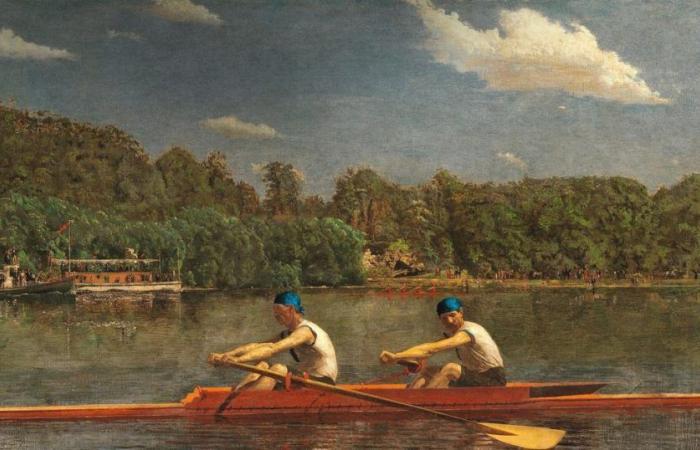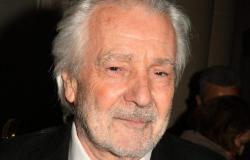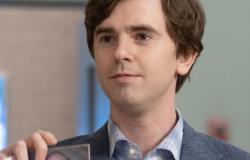As a necessary exercise, many museums have scheduled exhibitions echoing the Olympic Games. Because sport, since the world began, has fascinated artists.
Our era values the efficient, aesthetic, deployed and even augmented body. In the past, athletes put on a show while striving for the cutting edge of their abilities. Circus games, appreciated by citizens of Antiquity, contributed to social harmony, like the Roman adage “bread and circuses” (bread and games). Without the sporting communion, the collective exultation, the vibration of the crowds in the arenas, who knows what the world would have become? Such is the challenge of this Olympic sequence, hyperbolized by the infinite multiplication of images today. Some museums in the capital have switched to sports time to give this world event a depth of field that screens will not provide.
Musculature has fascinated artists for two thousand seven hundred years. Who knows if these sculptures of ancient bodies that mark out the promenades have not prepared our eye? The equipment, the sportswear, the visual staging, everything contributes to collective emulation. The Olympic motto “Faster, higher, stronger” invites us to surpass ourselves, to excellence. Isn’t art, like sport, the constant search for exploits in the service of the beauty of movement, that is to say, a form of grace?
The simple pleasures of sport
Paris did not wait for the 2024 Games to applaud those who tried to push their physical limits. Became popular from the second half of the 19th centurye century, sporting activities offered a constant spectacle to onlookers already enchanted by the beauty of the city. Rowing enthusiast, the painter Ferdinand Gueldry (1858-1945) presents a wild crowd, perched on a metal bridge between Boulogne and Suresnes, to applaud the Rowing Club competition organized in 1882 on the Seine, which was specific to the era .
Read also The Marmottan-Monet Museum plays the Olympic game
In this charming museum in the 16th arrondissement, located between the Trocadéro, Roland-Garros and the Parc des Princes, representations of boxing matches follow ball games, Basque pelota, tennis and croquet on the beach at Le Tréport in 1872: the tastefully selected iconography allows us to glimpse the charm of activities that were above all pleasant to perform and charming to watch. Sculptures, impressionist and post-impressionist paintings, photographs, colorful posters: nostalgia for sporting pleasure can invade the visitor disgusted by the current ramblings of augmented man.
“At stake! Artists and sport (1870-1930)», Marmottan Monet Museum (Paris 16e), until 1is september.
Please draw me a stadium
In 1880, in France, gymnastics became compulsory in primary school for boys, two years later, it was compulsory for girls. In 1937, nearly 400,000 young people obtained their “popular sports certificate”. From then on, to celebrate this “sporting” nation, the greatest architects tried to offer it a setting, Mallet-Stevens, Le Corbusier, Perret but also Rudy Ricciotti, Chaix and Morel. Places of spectacle and jubilation, stadiums sprung up on the outskirts of cities in the interwar period. From the stadion, a vast empty space and unit of measurement in Antiquity, to the Stade de France today, which can accommodate up to 67,000 spectators, the plurality of architectural forms of stadiums deserved an exhibition.
Read alsoExhibition: “Once upon a time there were stadiums” at the Cité de l’architecture
From the municipal stadium to the large sports arenas, these buildings have continued to reinvent themselves. They have become essential in the urban landscape and essential to the good collective functioning of a society which is seeking its religion, in the etymological sense. From body to stone, from muscle to cement, the athlete like the architect always seeks to demonstrate his power. One way or another, glory is within reach.
“Once upon a time there were stadiums”, City of Architecture and Heritage (Paris 16e), until September 16.
© Véronique Paul, photographer / SCAU Architecture
Social movements
Was there a need for a pretext to circulate among the works of the permanent collections of the Petit Palais? While stands crown the Place de la Concorde and the Pont Alexandre-III, the museum built in 1901 highlights its works relating to physical effort, prowess and discipline, created between Antiquity and the end of the 19th centurye century. A marked trail adds some modern creations where the Olympic athletes demonstrate their sporting passion, in front of a camera, through small video modules. The visit leads to the icon of Saint George slaying the dragon (17th century)e), with a calm eye and a determined body: an acrobatic choice.
Read alsoOlympic Games 2024: when photography is used to shed light on amateur sport
Further on, the bronze representing Theseus fighting the Minotaur whose legs intertwine with his thighs, sculpted by Antoine-Louis Barye, winner of the Prix de Rome in 1830, catches the eye. Just like the imposing sculptures, muscular and masterful, in the large entrance gallery. The grace of the statuette of Belle Otero, muse of the Belle Époque, dancer at the Moulin-Rouge, holding the large ruffles of her skirt, reminds us that the body arouses desire. Why not that of perfection?
“The Body in Motion”, Petit Palais (Paris 8e), until November 17.
©Paris Museums / Petit Palais.
Sports robots and design
Asphalt surfers, parkour enthusiasts, urban athletes need self-confidence, as do great tennis players, cyclists or skiers. Through this non-linear exhibition with supersonic accents, so unsenatorial although on the edge of the cameral palace, we discover how much equipment contributes to this assurance. Design, aesthetics, ergonomics can increase the potential tenfold: “Refined equipment is like divine prosthetics,” can be read on a placard. A massive wire mesh playground cuts through the main room of the exhibition, with its stands facing a dozen screens showing more or less sporting episodes, sometimes simply physical. “Pain is inevitable, suffering optional,” said Japanese artist Murakami. Only robots don’t suffer.
Read alsoThe Shoah Memorial looks at the Olympics from a political angle
Let’s not forget that the victory of IBM’s Deep Blue over world chess champion Garry Kasparov in 1997 gave the technique its gold medal and a passport to the future. Atlas, the humanoid robot imprisoned in its window, looks at the visitor with his mocking and glassy eyes: he is the most advanced in the world, equipped with artificial intelligence. We see him running, jumping, pivoting and even, the insolent one, celebrating his victory in a short video. No hesitation, terrible precision.
“Match. Design & sport, a story turned towards the future”, Musée du Luxembourg (Paris 6e), until August 11.
A sportsman in the city
The Covid-19 crisis has had some good fruits: the city has become a “loophole”, between a “prison home” and one “at our collective place”, writes Fiona Meadow, curator of this year’s Mini Maousse competition. The challenge taken up by these 50 designers was to counterbalance the Olympic infrastructure with small, nearby and accessible sports facilities. This meant imagining local urban microarchitectures to provide city dwellers with facilities dedicated to physical activity and relaxation.
Read alsoAnne de Guigné: “The Olympic Games in line with the 1878 Exhibition”
Artists have colored skateparks, running tracks have appeared on the roofs of buildings in Asia, on top of saturated cities. An overturned car becomes a ping-pong table, a coach on its side is transformed into a swimming pool. Photos and sometimes project models punctuate the exhibition, in this building which overlooks the Trocadéro where the triathlon, cycling and athletics events take place.
“Mini Maousse 9. When the city gets into games”, City of Architecture, Trocadéro entrance (Paris 16e), until September 16.
Rol Agency. National Library of France, Department of Prints and Photography
Down with discrimination
The imposing building, a “jewel of Art Deco”, hosts a chronological tour that presents the behind-the-scenes of each of the 33 Olympics, from Athens in 1896 to Paris in 2024. In this palace with its immense volumes, some display cases are devoted to the three Olympic events that had to be cancelled due to world conflict: those of 1916, 1940 and 1944. Presenting 600 works, ranging from archive films to photographs, the exhibition creates a dialogue between historical events, sporting figures and great witnesses of history.
Read alsoWhen the Olympic Games echoed the ills of the world
The Palais de la Porte Dorée, now dedicated to the history of immigration, could not forget the civic and democratic virtue that the Olympic Games sometimes brought: the struggles in favor of equality, against racism and discrimination, for ecology or civil rights. This original and informative exhibition for all audiences, on a global scale, illustrates how the values that sport conveys have advanced humanity, allowing it to take a fresh look at people. The collection of powerful images, exceptional archives and portraits of athletes with astonishing destinies constitute its treasure.
© Jesse Owens™ c/o Luminary Group
“Olympism, a history of the world”, Palais de la Porte Dorée (Paris 12e), until September 8.
And also
● “Gold, silver, bronze. A history of the Olympic medal”, Monnaie de Paris (Paris 6e), until September 22.
● “The stadiums are ours!”François-Mitterrand Library (Paris 13e), until October 13.
● Antique Pentathlon – pentathlon 2024, Museum of Mediterranean Archaeology (Marseille 2e), until September 29.
» Follow all the news from Figaro culture on Facebook et Twitter .
» Discover the program of guided tours of the Figaro Store ici .






